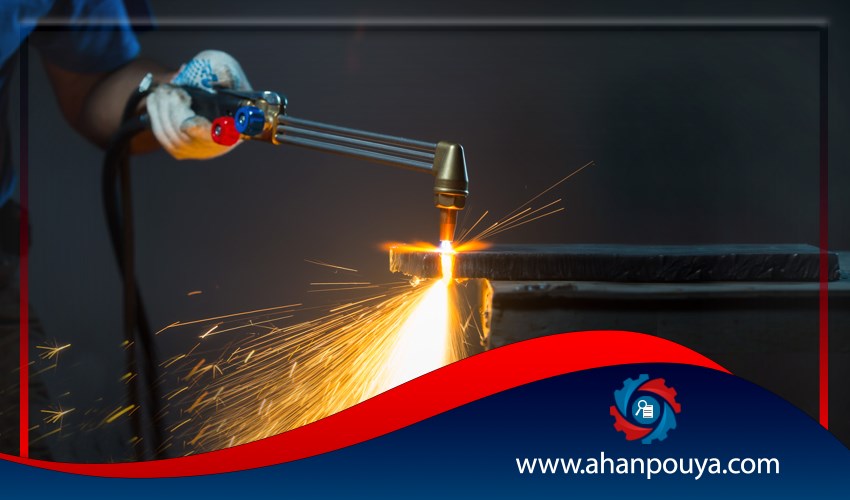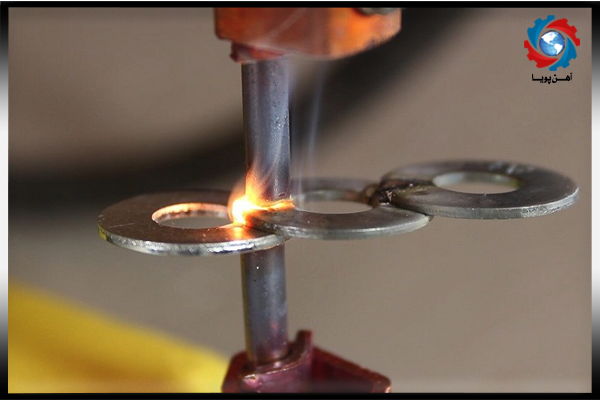
Resistive spot welding is one of the main methods of rolling welding and is most applicable to the joints of car bodies .
Resistive welding ( Resistance Spot Welding ) is one of the most important welding processes without using filler materials of welding wire . In resistive welding , the electrical current is directed to the contact position by electrodes .
The resistance of the metal to the passage of the electric current , leads to make heat and making position soft . In the next step , by applying pressure by electrodes , the connection is created and the two pieces are connected .
● The three main resistive welding processes that have a large application in industry are :
1) Resistance Spot Welding ( RSW )
2) Resistance Seam Electric Welding ( RSEW )
3) Projection Welding ( PW )
Spot welding is one of the main methods of rolling welding and is most applicable to the joints of car bodies .
In resistive spot welding , high currents and low voltages are used . In this method , the metal does not completely melt and the current cuts and the compressive strength of electrodes are applied to press the contact position to form a small metal component as called nugget .
Spot resistive welding is carried out manually , robotics or by spot welding machines . At low cases , manual welding and for high states , robots or special machines are used .

The main stages of resistance welding are as follows :
- Current implementation cycle : At this stage , the metal resistance causes the heat to be made and soften the connection position and welding done .
- Pressure implementation cycle : At this point the flow is cut off and the pressure applied on the electrodes causes the connection to be tightened .
- Cooling the Connection area : At this stage the pressure on electrodes is maintained until the connection area becomes solid .
The amount of heat achieved by the current passage , corresponds to the Q = I2Rt . I represents the pressure of the current , t represents the time and R represents the resistance of metal .
The parameters of the current and time can be controlled through the welding machine but , the resistance depends on different factors such as the thickness of the work piece , the electrodes , the pressure between the electrodes , the appearance of the electrode top , the surface quality in terms of smoothness and roughness and …

The important parameters of the spot welding are as follows :
Current intensity : This parameter has a greater effect on the size of the nuggets rather than strength and time .
Current implementation time : This is actually the welding time and the time that heat generation adjusted , so that without warming the electrodes , a strong weld is made . A further increase in time contributes partially to the limited growth of nuggets , but then it causes an increase in the penetration depth and reduces joint strength . Reduction of time also reduces the loss of nuggets and the loss of the weld stiffness .
Pressure power : Implemented pressure is an important parameter that , if low , reduces the penetration depth and weakness of nuggets . In the case of an increase in the optimal limit, the contact position is cracked .
Electrodes : In resistive welding both the current transfer and the pressure implementation , are carried out by electrodes . When the electrodes are new, the head is flat . During the time , it tends to be arched .
The cleaning and abrasion operation of the electrode , known as dressing , is to be considered in the maintenance of welding machines . Electrodes are mainly made up pf copper alloys that has a great electric – heat current .
Physical properties of materials determine that whether the material is suitable for resistive welding or not . Generally speaking , the materials welded are categorized into two groups : conductive materials and resistive materials . Conductive materials are like aluminum , copper , gold and silver . Resistive materials are such as steel , nickel , inconel , tangusten and titanium .
Materials that have good electrical conductivity have less strength . This classification is a good criterion for the selection of materials and electrodes . As mentioned , higher resistance of materials leads higher heat and a better weld .
So , the rule of opposites is used to choose materials and electrodes . According to this rule , conductive electrodes are chosen for resistive materials and resistive electrodes for conductive materials . But materials such as aluminum and copper – beryllium are the exceptions of this rule .
Electric resistance : Low electrical resistance materials require more electric current to produce similar heat - resistant materials . These materials have also less resistance at contact levels .
Thermal conductivity : Materials with high thermal conductivity ( e. g. copper ) have high conductivity and cause acceleration of heat out of the welding zone .
Thermal expansion : Softer materials ( lower strength ) , have a high thermal expansion coefficient . Materials with higher strength such as tangusten , has lower thermal expansion .
Hardness and Strength : High resistance materials , require to be welded with solid electrodes because they need more power for welding .
Waxish temperature range : The temperature range that the parts are formed easily or under applied stress is important . Steels have wider temperature range , so they can be controlled easily .
Natural materials such as aluminum and copper have lower range so they require more control in order not to melt .
Oxide shells : Contamination of surfaces with oxide layers causes a drop in welding . These shells should be cleaned on surfaces before the welding begins .
- The lower process time
- No need for consumable materials such as protective gas and welding wire
- The safety of the process due to low voltage
- No pollution in environment
- Creating an electro

Ahan Pouya with more than a decade of best-selling experience, adheres to professional and ethical principles in the field of selling and buying at inside and outside the borders of Iran, helping you in the steel industry.